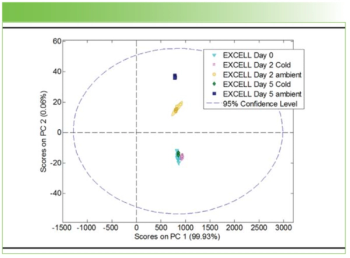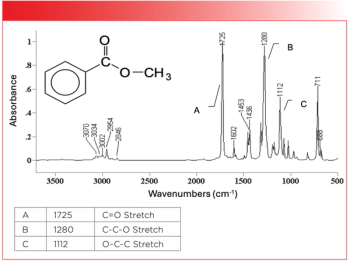
Spectroscopic Analysis Reveals Insights into 2-Amino-1-Naphthalenesulfonic Acid Biological Activity and Solvent Properties
Scientists have conducted a spectroscopic analysis of 2-amino-1-naphthalenesulfonic acid, exploring its electronic properties and its potential as an antiviral agent.
In a recent study published in Spectroscopy Letters, lead author S. Muthu and the Arignar Anna Government Arts College in India research team conducted a thorough investigation into the spectroscopic properties of 2-amino-1-naphthalenesulfonic acid (1). The research aimed to shed light on the electronic properties of various solvents and explore the molecule's potential for biological activity.
The researchers employed a range of analytical techniques, including Fourier transform infrared (FT-IR) spectroscopy, Raman spectroscopy, UV-visible (UV-vis) spectroscopy, and density functional theory (DFT). These methods allowed for a comprehensive understanding of the compound's structural and electronic characteristics.
The team focused on vibrational spectrum assignments, using the distribution of potential energy to analyze the spectral data in detail. The results obtained from the natural bond orbital (NBO) analysis offered insights into the interactions between the donor and acceptor within the molecule.
To quantify the bioactive regions of the compound, the researchers utilized the molecular electrostatic potential (MEP). This analysis highlighted specific areas of interest within the molecule, providing valuable information for further studies. MEP is a concept used to describe the distribution of electrical charges within a molecule. It provides valuable information about the regions of positive and negative charge within the molecule. MEP is calculated by mapping the electrostatic potential onto the molecular surface, indicating areas of high and low electron density. This analysis helps in identifying potential sites of chemical reactivity, interactions with other molecules, and understanding the biological activity of the compound.
The computed values of the highest occupied molecular orbital (HOMO) and lowest unoccupied molecular orbital (LUMO) for different solvents revealed electron stimulation features. This data is crucial for understanding the electronic properties of solvents and their potential impact on chemical reactions involving the compound.
Additionally, the team conducted several other analyses, including the elucidation of localized orbital locator, electron localization function, reduced density gradient, electron-hole distribution analysis, and drug-likeness evaluation. These investigations contributed to a comprehensive characterization of the compound's properties.
Furthermore, the researchers performed molecular docking studies to investigate potential biological activities. The results indicated that substituents targeting amino acids exhibited antiviral properties. This finding suggests that further exploration of the molecule's potential as an antiviral agent could be fruitful.
The study's comprehensive spectroscopic analyses, such as FT-IR and FT-Raman, provided valuable insights into the structural properties of 2-amino-1-naphthalenesulfonic acid. The calculation of the HOMO-LUMO energy gap and the distribution of the molecular electrostatic potential added to the understanding of its electronic properties. The NBO and reduced density gradient analyses further enriched the characterization of the molecule.
This research sets the stage for future investigations into the compound's potential applications, particularly in the field of antiviral drug development. The findings presented by Muthu and their team contribute to the growing body of knowledge in the field of spectroscopy and provide a solid foundation for further studies in this area.
Reference
(1) Sangeetha, P.; Alharbi, N. S.; Kazachenko, A. S.; Muthu, S.; Rajesh, R. Spectroscopic analysis of 2-amino-1-naphthalenesulfonic acid, molecular docking, and evaluation of the electronic properties of several solvents. Spectrosc. Lett. 2023, ASAP. DOI:
Newsletter
Get essential updates on the latest spectroscopy technologies, regulatory standards, and best practices—subscribe today to Spectroscopy.




